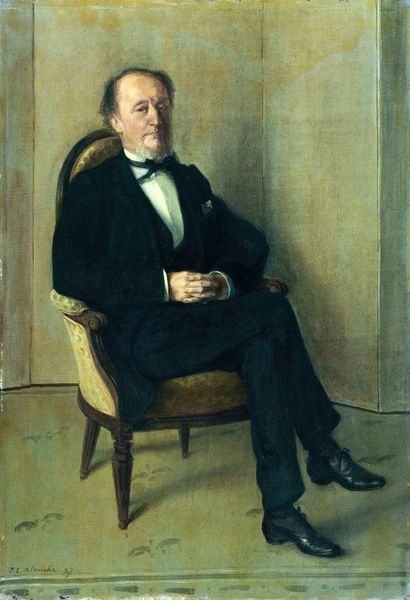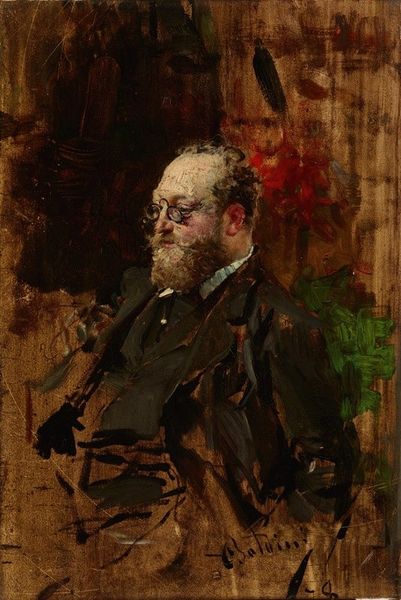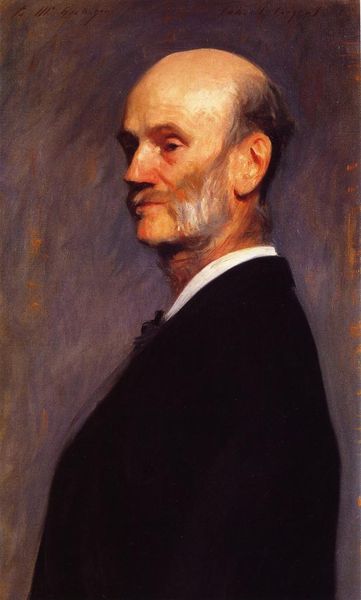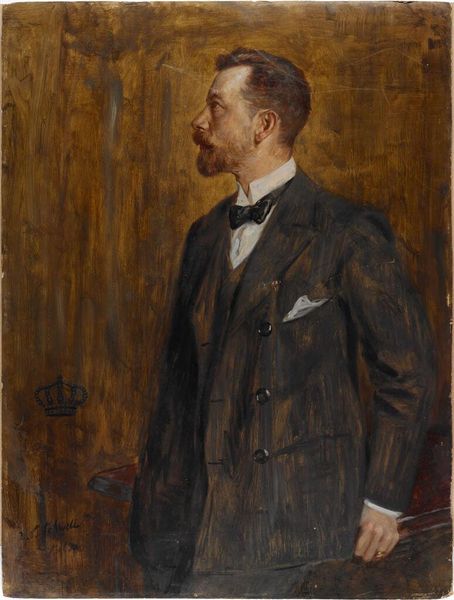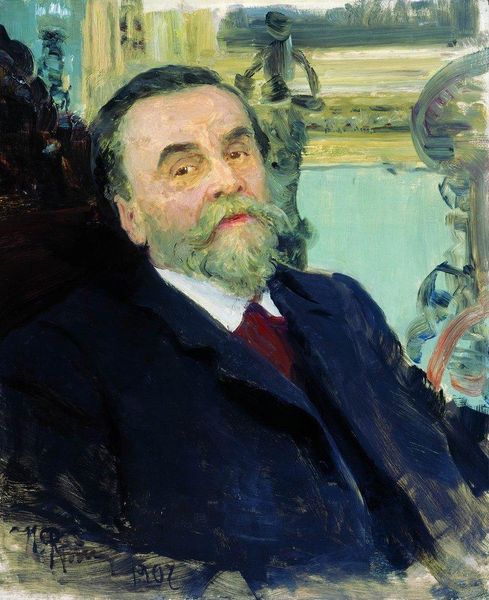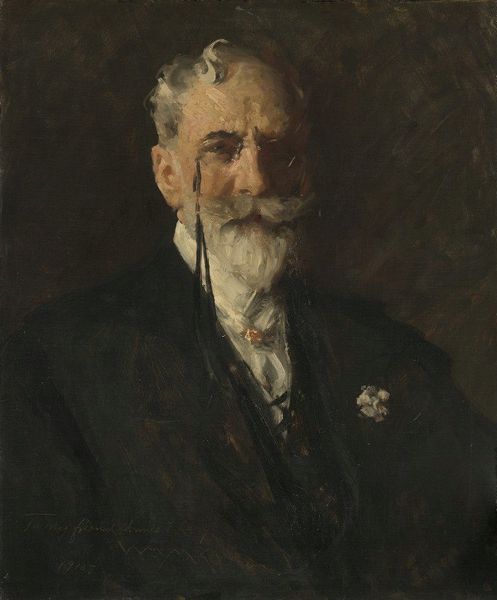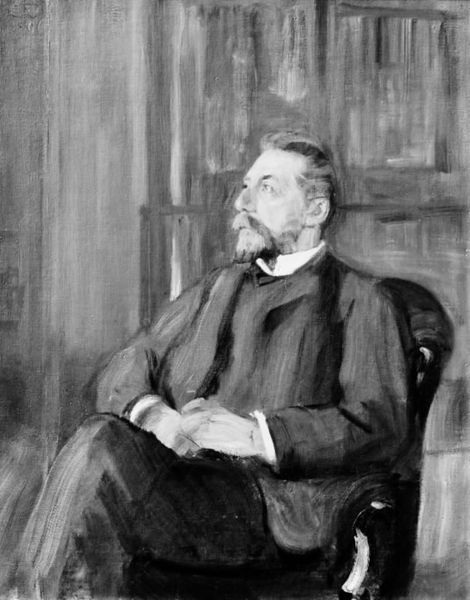
oil-paint
#
portrait
#
oil-paint
#
oil painting
#
russian-avant-garde
#
history-painting
#
realism
Copyright: Public domain
Editor: So, here we have Ilya Repin’s "Portrait of Ivan Ivanovich Shamshin" from 1902, created using oil paint. It’s interesting how the subject’s almost enveloped in shadow. What really jumps out at you in this piece? Curator: Let's think about Repin’s choice of oil paint. What does it tell us about artistic production in that era? It signifies a level of status, a tie to academic tradition even within the Russian Avant-Garde movement, yet also allows for the textural brushwork evident here. This painting shows an elite at the dawn of a societal shift; a world soon where the labour that creates the paints becomes recognised. Look closely at the chair: it’s sumptuous, the very antithesis of a labourer’s stool. The means by which wealth concentrates are visible. Editor: That's a really fascinating perspective, how the materiality and production link to the sitter's place in society. So you’re saying the oil paints and ornate chair are key to understanding that era? Curator: Absolutely. Oil paint at the time was more available than ever before; it became a symbol of accessibility for the few and its production had moved beyond strictly artisan methods, but consider the accessibility to *create* paintings versus the societal changes on the horizon. Note the dark tones dominating; what kind of message do they signal about the man being portraited, using new modes of consumption but still a man with an aura of the old elite? Editor: The dark tones definitely project a more formal mood. It feels more complex now, seeing the art materials and setting as active parts of a changing system, rather than just backdrops. Thanks for illuminating this; I'm seeing this portrait in a completely new light! Curator: It’s the interplay of materials, labour, and social change. They give the portrait its depth and ongoing relevance to discussions of wealth and status.
Comments
No comments
Be the first to comment and join the conversation on the ultimate creative platform.

